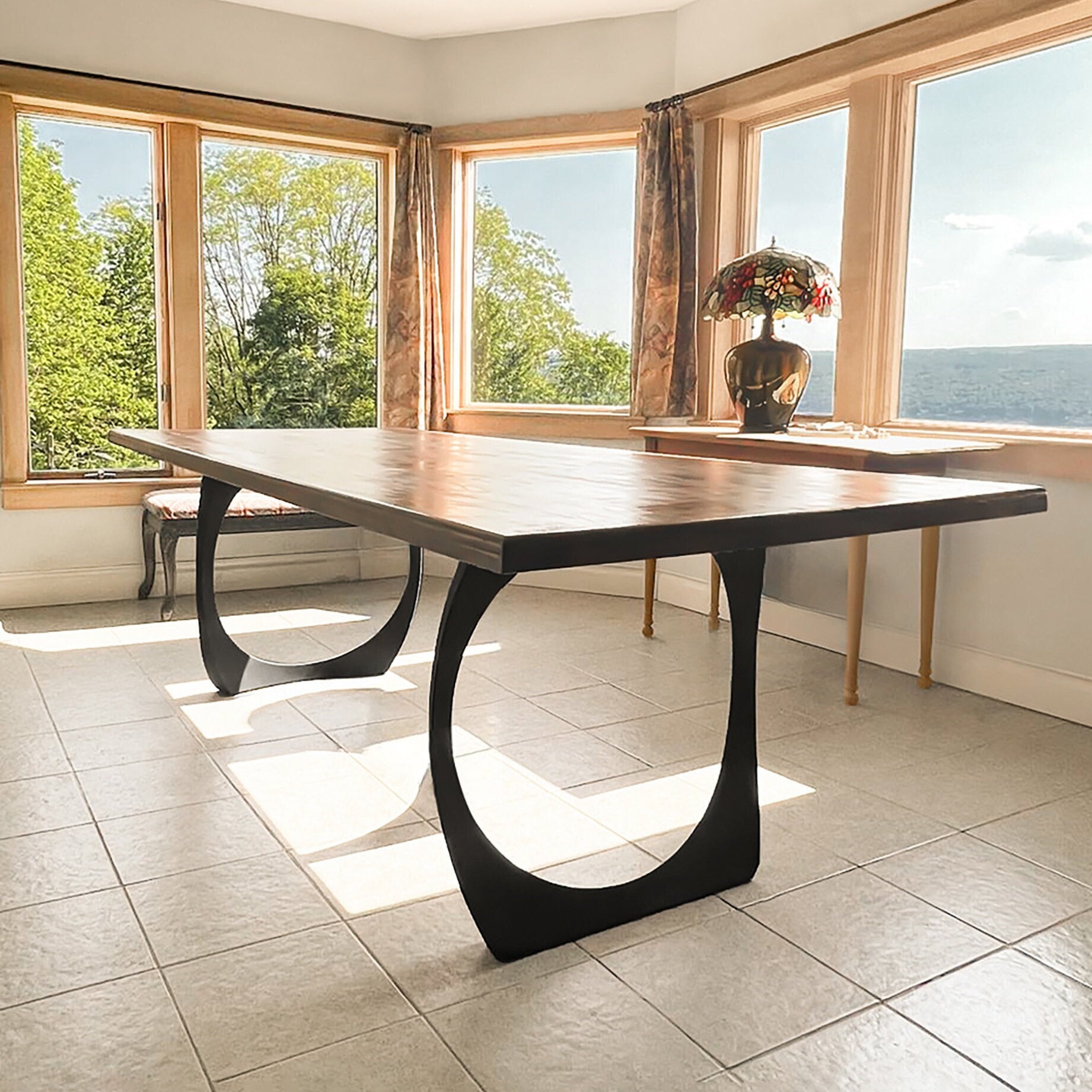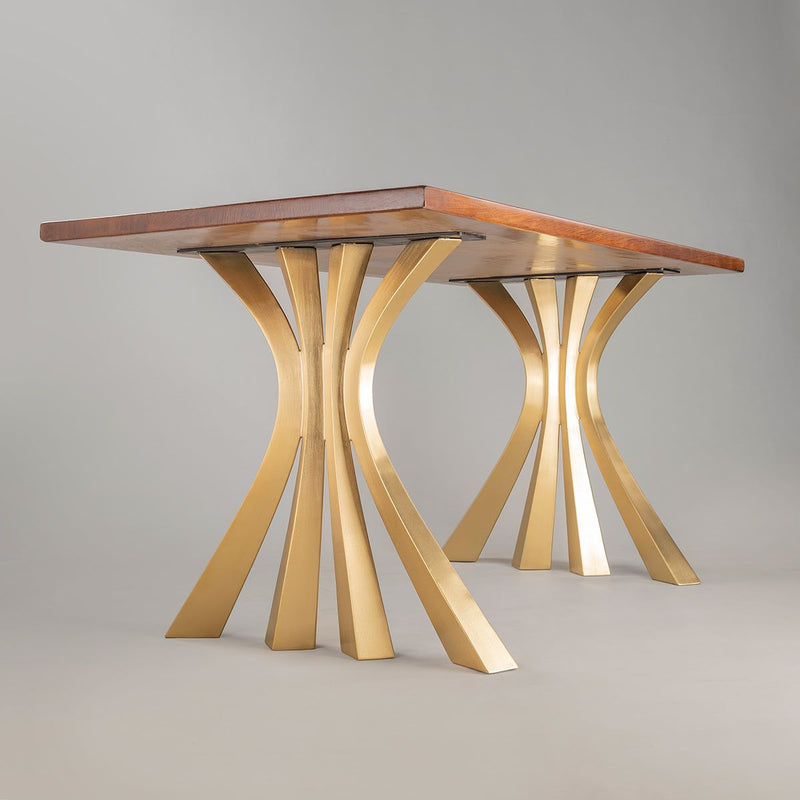Upgrade Your Furnishings with Fashionable Dining Room Table Legs
Upgrade Your Furnishings with Fashionable Dining Room Table Legs
Blog Article
Choosing the Perfect Table: What Styles Work Best for Your Home?
Picking the ideal dining table for your home can be a nuanced procedure that balances looks and performance. To navigate these choices efficiently and discover a table that really complements your home, consider the following facets in detail.
Analyzing Your Room
Evaluating the dimensions and layout of your eating area is a vital primary step in choosing the perfect table. Begin by gauging the size and width of the room, representing entrances, home windows, and various other building attributes that can affect table positioning. This ensures that your table not only fits however additionally enables for comfy movement around it.
Think about the number of people you generally delight. A table needs to suit your household's day-to-day needs while providing sufficient adaptability for occasional guests. As a rule of thumb, allocate a minimum of 24 inches of table width each to make sure a comfy dining experience.
It's also important to preserve ideal clearance around the table. Ideally, there need to go to the very least 36 inches in between the table side and walls or other furniture, allowing very easy accessibility and activity. For rooms where chairs with arms or additional storage units like buffets are included, raising this clearance to 48 inches is suggested.
Illumination and ambience play substantial duties. Guarantee that your eating table straightens with existing lighting components or prepare for sufficient illumination remedies. This comprehensive spatial evaluation guarantees that your table not just fits literally however also integrates with your room's total performance and aesthetic.
Popular Table Styles

Conventional dining tables frequently feature ornate information, bent legs, and abundant wood finishes, evoking a feeling of classic sophistication. They are best for homes with traditional decor or those looking to include a touch of refinement to their eating area.
Modern dining tables prioritize simplicity and tidy lines, usually integrating materials like glass and metal. These tables are excellent for modern areas, providing a streamlined and minimalist look that complements minimal design philosophies.
Rustic eating tables, on the other hand, emphasize all-natural materials and a handmade appearance - dining room table legs. They frequently include recovered wood and a troubled finish, developing a warm and welcoming environment. These tables work well in farmhouse-style homes or those looking for a comfortable, organic feeling
Industrial dining tables combine resources such as metal and timber, frequently showcasing a practical aesthetic. This design is appropriate for loft spaces or metropolitan rooms, adding a touch of sturdy charm and durability to the eating experience.
Each style uses distinct benefits, making it crucial to choose one that straightens with your home's overall style and your individual preferences.
Product Options
When picking a table, the selection of material plays a crucial function in establishing both the table's aesthetic appeals and functionality. Wood, steel, glass, and composite products each offer special advantages and challenges, making it imperative to line up the product with your home's style and lifestyle requirements.
Timber is a classic and versatile choice, readily available in varieties such as oak, walnut, and mahogany. Known for its longevity and warmth, wood matches both typical and modern interiors. Nevertheless, it needs normal upkeep to stop scratches and warping.
Steel tables, often crafted from stainless steel, aluminum, or wrought iron, are applauded for their contemporary charm and toughness. They are specifically matched for commercial or minimal setups yet can be vulnerable to damages and might really feel chilly to the touch.
Glass eating tables bring an air of sophistication and visibility, suitable for smaller areas as they create an illusion of more room. While easy to tidy, glass can be at risk to spots and calls for cautious managing about his to prevent chips and fractures.
Composite materials, such as MDF and plywood, offer cost-effective and personalized remedies, though they might do not have the durability of natural products. Picking the ideal material ensures your table is both a useful possession and a visual delight.
Sizes And Shape Considerations
After identifying the appropriate product for your table, the next consideration is picking the ideal sizes and shape to fit your area. The form of the table dramatically affects the room's visual and capability. Rectangle-shaped tables, one of the most common form, are suitable for larger rooms and can fit a higher number of guests. They additionally enable for an extra official dining experience. Alternatively, round tables cultivate a sense of affection and are exceptional for smaller eating areas, urging discussion by removing corners and making every person feel just as included.
Dimension is equally vital and should be dictated by both the space's measurements and the number of people you intend to seat routinely. Generally of thumb, allocate at least 24 inches of table size each to ensure comfortable dining. In addition, take into consideration the table's clearance space: there must go to the very least 36 inches between the table edge and the walls or other furnishings. This makes certain that restaurants can walk around easily without feeling cramped. Prolonging tables supply flexibility if you frequently hold larger events, giving added seats when required without occupying extra space daily. Selecting the best shape and size makes certain both usefulness and visual consistency in your eating location.
Matching Your Design
Picking an eating table that harmonizes with your existing decor is critical in creating a cohesive and welcoming area. A sleek, minimal table with clean lines is perfect for a modern-day home, while a vintage, elaborate table suits a much more conventional setting.
If your decor features warm tones and natural materials, think about a wood table to boost the natural feeling. Alternatively, a glass or metal table may be more suitable in an area dominated by great shades and commercial components.
A rough-hewn, reclaimed timber table can include character to a rustic room, while a sleek marble surface area can raise a glamorous dining location. A well-matched eating table not only boosts aesthetic appeal yet likewise enhances the overall eating experience.

Conclusion
Picking the ideal table requires mindful consideration of space, style, materials, form, and dimension (dining room table legs). Typical tables complement classic interiors with rich company website wood surfaces, while modern-day tables additional resources match modern setups through glass and metal. Rustic designs introduce heat via natural products, and commercial designs enhance urban environments with raw aspects. Balancing the table with existing decoration makes certain both capability and aesthetic allure, adding to a natural and cosmetically pleasing eating location.
Report this page